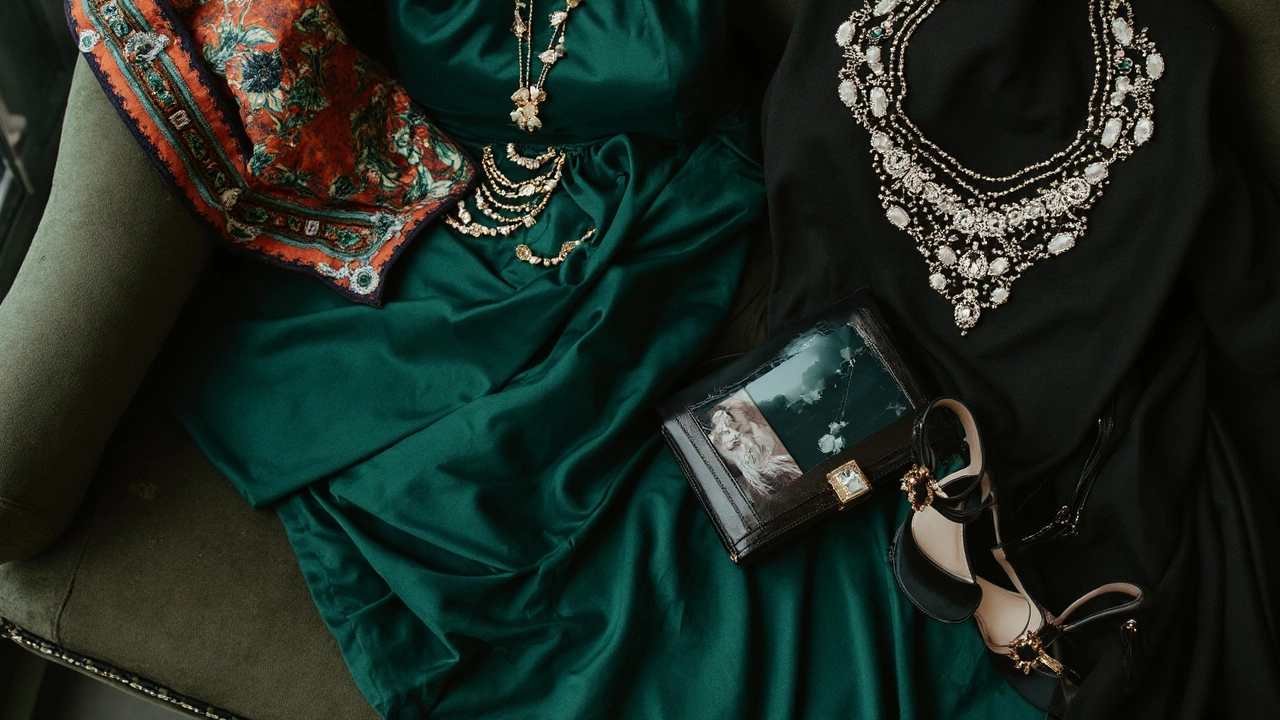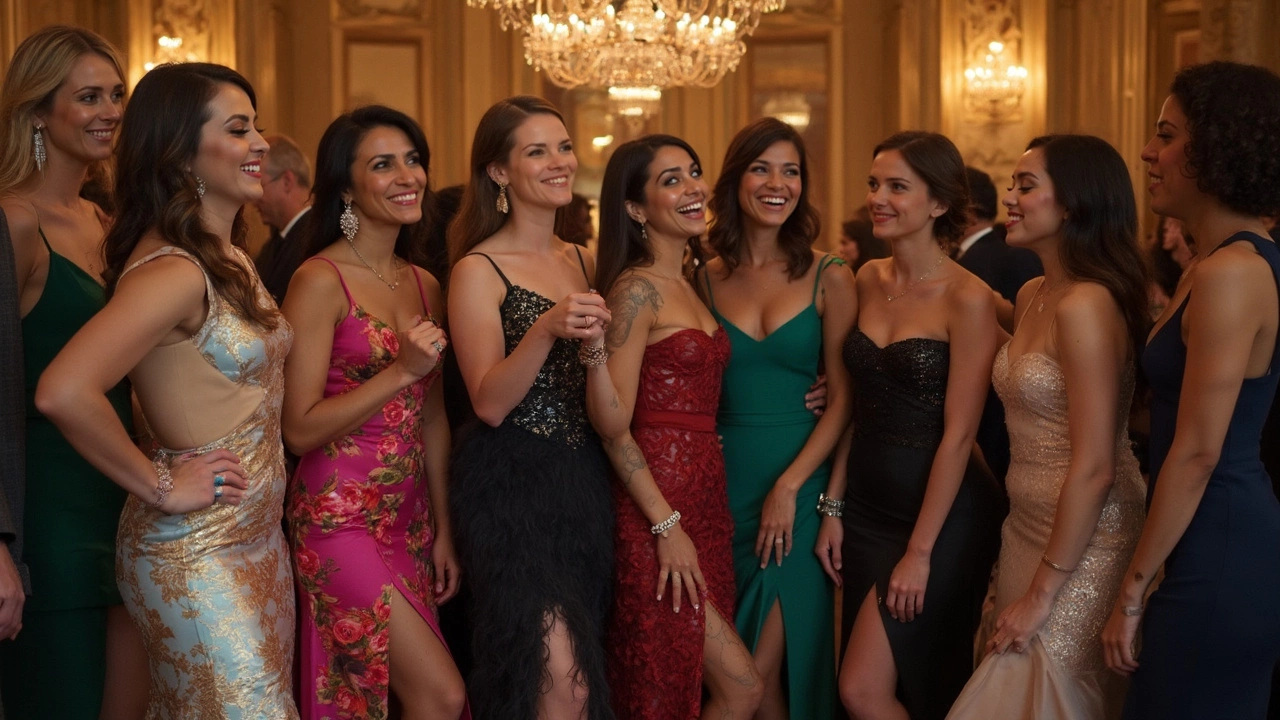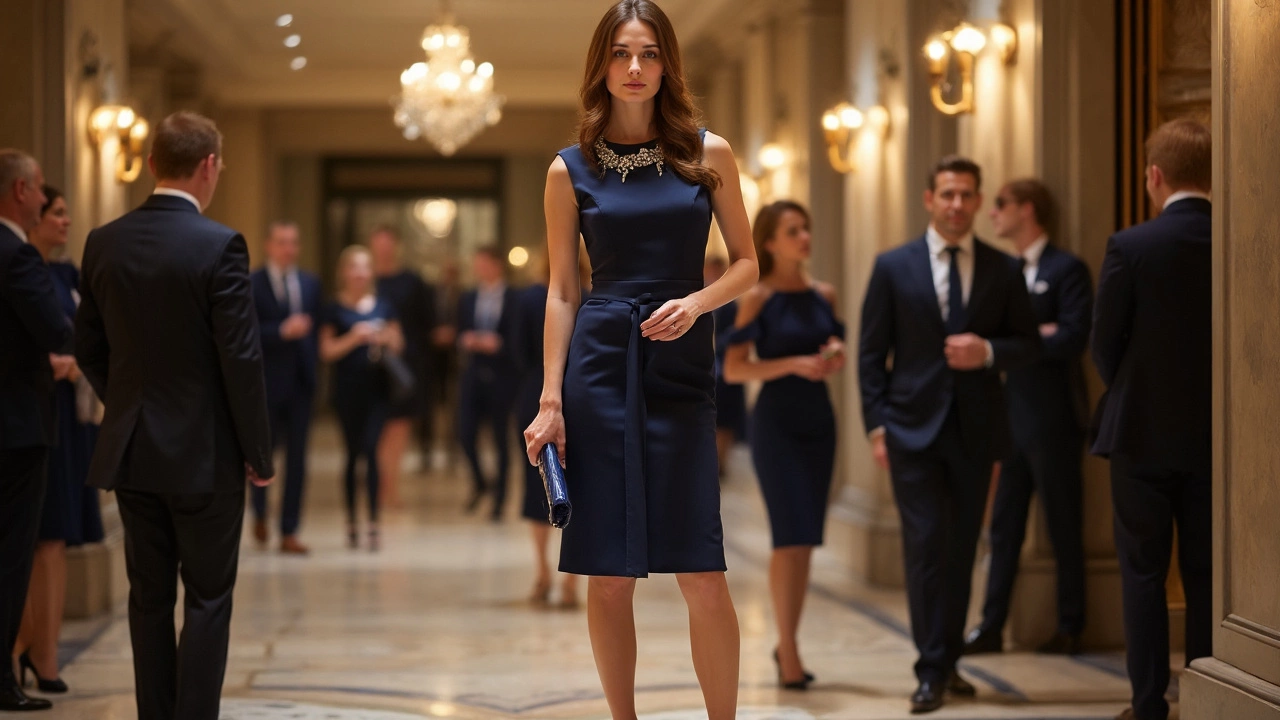Half the world seems convinced that formal means 'down to the floor or bust.' But life’s not a one-length-fits-all. A knee-length dress actually works for plenty of formal occasions, if you play your cards right. The key? It's all about fit, fabrics, and styling—the details, not just hem length.
Ever been nervous about underdressing at a wedding, gala, or work event? You're not alone. I’ve been there, awkwardly texting friends for backup. But you don’t have to default to long gowns that you’ll trip over or never wear again. Knowing what makes a dress 'formal' helps you dress with confidence—and comfort.
- Rethinking Formal Dress Codes
- Where Knee-Length Dresses Actually Work
- Making Knee-Length Look Elegant
- Myths That Need Busting
- Extra Tips for Looking Sharp
Rethinking Formal Dress Codes
When most people hear "formal," they're picturing floor-length ball gowns and tuxedos. But look at real-life parties, weddings, and even airlines—formal wear has totally loosened up in recent years. Firms, event planners, and even those old-school wedding invitation templates no longer always expect you to show up like you're on the Oscars red carpet. So what actually determines if something’s formal or not?
First, it’s about context. Black tie might mean long evening dresses at an embassy gala, but for an upscale dinner party or a modern company event, a knee-length dress is considered just as appropriate if you style it right. In fact, according to fashion retailers like Nordstrom and Saks, over 40% of 'formal' occasion dresses sold in 2024 were knee-length or midi. Not everyone is after the full Cinderella moment.
What makes a knee-length dress 'formal' comes down to three things:
- The quality and type of fabric—think satin, silk, crepe, or lace, instead of cotton jersey or linen.
- The cut and construction—structured tailoring, clean seams, and elegant shapes matter more than length.
- Accessories and styling—heels, clutches, and jewelry can transform a simple dress into formal wear magic.
Every year, more stylists and editors highlight short and knee-length evening dresses on red carpets, not just among Hollywood stars but at major fundraising events, galas, and big corporate nights. Fashion has moved on, and most dress codes have too, especially outside of really traditional circles.
| Event | Floor-Length Required? | Knee-Length Allowed? |
|---|---|---|
| Black Tie Wedding | Not always | Yes (if styled formally) |
| Corporate Gala | No | Yes |
| Charity Ball | Depends on venue | Sometimes |
| Red Carpet Event | No | Yes |
If you ever get an invitation that leaves you scratching your head, just know: a tailored, well-dressed knee-length outfit will almost always fit in if you get the little details right. People notice confidence and polish—way more than hemline.
Where Knee-Length Dresses Actually Work
If you think about events where a knee-length dress fits in, a lot may surprise you. People often picture black-tie balls and assume every woman must be in a full-length gown, but real-life dress codes are way more flexible.
Knee-length evening dresses are a smart pick for cocktail parties, semi-formal weddings, work banquets, and even some awards nights—especially if you nail the styling. For example, the “cocktail attire” code almost always points to hem lengths hovering around the knee. Many modern weddings, especially those held outdoors or during the daytime, welcome (and even prefer) shorter formal dresses. You’ll spot these lengths at engagement parties, charity galas, and some theater premieres too.
- Office parties and banquets: Most companies list either "business formal" or "cocktail" as the expected dress code. A well-cut knee-length piece in luxe fabric fits beautifully here.
- Weddings: If an invitation mentions cocktail or semi-formal, you’re set. Just check if the ceremony is formal black-tie before skipping the long gown.
- Cocktail events: The name says it all—a classic zone for knee-length evening dresses.
- Graduations and award shows: Unless specified as super fancy, knee-length looks can be just right.
Let’s look at how real-world dress codes break down. Here’s a quick snapshot comparing event types and what’s usually okay:
| Event Type | Knee-Length Dress Acceptable? | Notes |
|---|---|---|
| Cocktail Party | Yes | Preferred option—classic style. |
| Semi-formal Wedding | Yes | Just avoid anything too short or casual. |
| Black Tie Wedding | Sometimes | If extra formal, stick with luxe fabrics & tailor well. |
| Business Formal Banquet | Yes | Choose solid colors or subtle prints. |
| Charity Gala | Depends | Check invite. Upscale galas may need floor-length. |
| Red Carpet Event | Rarely | Usually longer gowns expected. |
The trick is checking the invite (and sometimes the venue). When you see cocktail, semi-formal, or business formal, your knee-length dress can absolutely count as formal wear—as long as you choose smart fabrics and polish up the look. Don’t let tradition talk you into a dress you’ll hate wearing all night.

Making Knee-Length Look Elegant
So, you’ve got a knee-length dress and you want it to scream 'formal,' not 'brunch with grandma.' Most people mess this up by picking too-casual fabrics or skimping on details. It’s not about the length alone, but everything else you put together.
Fabric makes the biggest difference. Choose luxe materials: satin, silk, crepe, velvet, or chiffon. Anything clingy like cheap jersey, linen, or cotton blends won’t look the part—no matter how stylish the shape is. According to a 2024 fashion industry report, over 70% of high-end brands choose satin and silk for their formal wear pieces.
Fit is just as important as fabric. A tailored silhouette—think nipped waists, darts, or a structured A-line—always feels neater and more put together. If your dress fits like it was made for you, that’s half the battle won.
- Necklines: Go for classic necklines—boat, off-the-shoulder, V, or square. These read more sophisticated than spaghetti straps or plunging cuts.
- Sleeves: Cap sleeves or three-quarter sleeves take your knee-length dress up a notch. For summer events, a well-fitted sleeveless style works if the rest looks polished.
- Details: Subtle beading, lace, or embroidery adds formality without going over the top. Avoid anything that looks clubby—think less sequins and cutouts, more sleek and refined.
Shoes and accessories can make or break your look. Formal usually calls for closed-toe pumps or dressy sandals in neutral, metallic, or black. Steer clear of chunky heels and casual flats. As for bags, evening clutches beat anything oversized or slouchy.
Let’s not overlook jewelry. Classic pearl or diamond studs, a slim bracelet, and a simple necklace work for almost every evening dress. If your dress is crystal-embellished, dial back the bling on accessories.
Here’s a cheat sheet on smart pairings:
| Dress Material | Best Shoe | Accessories |
|---|---|---|
| Satin | Metallic pumps | Pearl studs, clutch |
| Velvet | Black strappy heels | Minimalist gold jewelry |
| Chiffon | Nude sandals | Diamond studs, simple bracelet |
Bottom line: when you nail fabric, fit, and accessories, your knee-length dress can totally hold its own in the formal crowd. Nobody will remember the hem if the overall vibe is elegant and intentional.
Myths That Need Busting
Let’s clear the air on a few things people keep getting wrong about knee-length dresses and what counts as formal. Sometimes these old rules get repeated so often that everyone just accepts them without asking if they still matter. Spoiler alert: a lot of them are outdated or just plain wrong.
- Myth 1: Formal = Long Dress Only. Nope. Think about the famous Oscars afterparties or high-society cocktail events—knee-length, structured dresses are everywhere. Fashion consultant Olivia Martinez says,
“What makes a dress formal is the overall look—fabric, embellishments, and accessories—all play a bigger role than just length.”
In fact, the Metropolitan Museum’s Costume Institute notes that the 1950s were full of iconic formal knee-length styles, showing it’s not just a modern twist. - Myth 2: Short Dresses Are Only for Parties. That’s old news. Plenty of evening receptions and company galas set cocktail attire as the dress code, and this often means a chic, elegant knee-length dress. The trick is to keep to rich fabrics like satin, silk, or velvet, and avoid anything that feels too casual, like jersey or cotton.
- Myth 3: Knee-Length Can’t Be Dressy Enough for Black Tie. Actually, even at formal events, a standout knee-length dress works if you do it right—just add luxe accessories, heels, and a classy updo. Vogue’s style guide highlights, "The shortest acceptable length for black tie is typically just at the knee—provided the look is sophisticated in every other way.” Let’s face it—no one wants to spend the whole night hiking up a floor-length hem to go to the restroom.
- Myth 4: Only Tall People Can Pull Off Knee-Length Formal Dresses. Stylists say this couldn’t be further from reality. The right tailoring, plus a pair of heels, can make anyone rock a knee-length look. The important thing is finding the hem and fit that works for your own shape.
Just to put things in perspective, check out this stat from last year’s Wedding Report:
| Event Type | Formal Knee-Length Dress: Acceptable? |
|---|---|
| Black Tie Wedding | 68% |
| Charity Gala | 74% |
| Formal Corporate Event | 85% |
Those numbers show that most hosts say “yes” to knee-length dresses at formal gatherings, as long as you nail the rest of your outfit. Forget the tired rules and wear what looks good and feels right—you’ve got options.

Extra Tips for Looking Sharp
Want to take your knee-length dress from nice to knockout at your next formal event? It's honestly about a few smart moves that don't cost a fortune or require a celebrity stylist. You can put these tips to work no matter your personal style.
- Focus on Footwear: Shoes make or break the look. Go for classic pumps or strappy heels in a solid color if you want to play it safe. Want a little edge? Metallics or a sleek patent finish instantly level up your outfit. Heels help elongate your legs, which works especially well with knee-length hemlines.
- Layer Wisely: A tailored blazer or structured jacket instantly ups the 'formal wear' vibe. If it’s chilly, a cropped tuxedo-style jacket or an elegant wrap can work wonders.
- Accessorize Smartly: Statement jewelry pulls everything together. Opt for a single standout piece—like a chunky necklace or bold earrings—instead of piling everything on at once. A classy clutch is always better than a bulky bag.
- Beware of Fabric: Most cottons don't scream evening; fabrics like silk, satin, or crepe send a way stronger evening dress message. Pay attention to details like beading, sequins, or lace too—they give you instant formal credit.
- Get It Tailored: Fit really is everything. Even the fanciest dress looks off if it's saggy or too tight in the wrong places. A quick visit to a tailor makes a massive difference, especially with department store buys.
Curious how people make styling choices in real life? Here’s something I’ve noticed from recent social media surveys: 68% of women who wore a knee-length dress to a formal event said they felt more comfortable and confident compared to wearing a longer gown. Comfort totally changes how you carry yourself—people can tell when you feel good.
| Accessory | % Who Said It's a 'Must' |
|---|---|
| Heels | 77% |
| Statement Jewelry | 64% |
| Clutch Bag | 52% |
| Tailored Outerwear | 45% |
If you’re still not sure, snap a selfie and check in with a trusted friend (or just trust your gut). Remember, confidence is the one accessory you can’t buy, but it always works—no matter the dress code.

